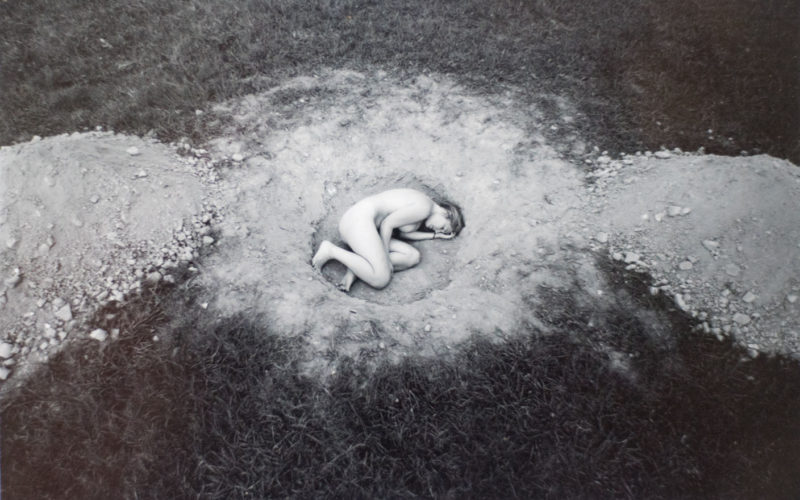In its third year, Inverse Performance Art Festival continues its mission of fostering a community of support and understanding around artists and the performance genre. Fifty local, national and international artists will implement their thought-provoking, contemporary, engaging works from Fayetteville to Bentonville April 12-15 — a different city for each day. Because of the variable nature of the form, and to avoid limiting it through definition and explanation, a few participating artists shared their insights with The Free Weekly so that readers might gain a better understanding of their motivations in their work and their hopes for the festival.
David Jonathan Knox of Overland Park, Kan., creates work that seeks to remove the distance between maker and viewer; the work of Atlanta artist and disability/LGBTQ advocate Jessica Elaine Blinkhorn considers beauty in difference; Butch Merigoni of New York City will lead a participatory workshop encouraging viewers to “play with uncertainty”; and Fayetteville artist Heather Younger Morton (pictured) tasks the audience with examining how they fill their time.
Regarding the viewer’s connection with the work:
Knox: If the artist is seen as the giver and the viewer is seen as the receiver, then an expectation starts to form on what the viewer should be receiving; however, if the viewer becomes a giver as well — giving their time and attention to the work — their expectations fade away, and they will experience a new way of being present — seeing, thinking and understanding what is happening in front of them. When you give more, in return you will receive more.
Blinkhorn: I use my body as a tool to educate people on difference, and also as a means to have the audience question themselves: Why are they so disturbed by the images that are put in front of them? I really like to draw and speak about forms that a lot of people pass by and look at — not because they’re necessarily beautiful — but because they’re different. I like the idea of people educating themselves and me giving them the tools to do that.
Merigoni: It’s not always easy, but the act of change is an important part of being alive. … It shows us that we’re stronger than we think. But what comes before change is uncertainty and doubt. My goal with this workshop is for participants to voluntarily … construct an environment not only consumed by ambiguity but welcomed by everyone present. If we can do this in the context of a workshop, then facing the uncertainties of our lives might get easier.
On how to get the most from the work:
Knox: As a maker, I am interested in creating a closeness — asking the question, how can a “looking at” become a “looking with?” What can we experience together as maker and viewer? A place where we both can give our attention.
I believe making and experiencing art is about feeling deeply. How can I get closer to what I am feeling? I relate the word “poignancy” to feeling an emotion. It has the quality of poetics, the ephemeral, and the feeling of presence and absence. I pay close attention to those moments of discovery in the studio (or life).
Blinkhorn: [The audience] has to not let what academics have defined as art to blind them; they need to be a little more open and willing to accept or reject what’s in front of them, not disregard it. All of my performances are in some way interactive. You can go to a museum or gallery and look at a piece of art, and if the artist creates a work that allows you to feel something, then you’re going to feel something. But to actively engage with the artist, the [performance] art form is a completely different experience than just one of looking at it.
Merigoni: If you can, physically get in the work. Walk around, smell things. Touch things, if possible. Be actively involved and stay in it longer than you would normally.
Live performance defends, what I believe to be, the ultimate form of anything: the moment. … These unfixed moments take art beyond an explainable thing and set it free into the realm of what’s happening right now. Live performance acknowledges that these moments are everything, but that they have to come and go on their own terms.
__
FAQ
Inverse Performance Art Festival
WHEN & WHERE — April 12: 6-9 p.m., The Grand at 117, Rogers
April 13: 6-9 p.m., 21c Museum Hotel; 8-10 p.m., Meteor Guitar Gallery, Bentonville
April 14: Noon-3 p.m., Local Color Studio Gallery; 4-6 p.m., Stage Eighteen; 7-9:30 p.m., UA Art & Design District, Fayetteville
April 15: 1-4 p.m., The Station on Emma Avenue, Springdale
COST — Free
INFO — inverseperformanceartfestival.org; facebook.com/inverseperformancefestival



